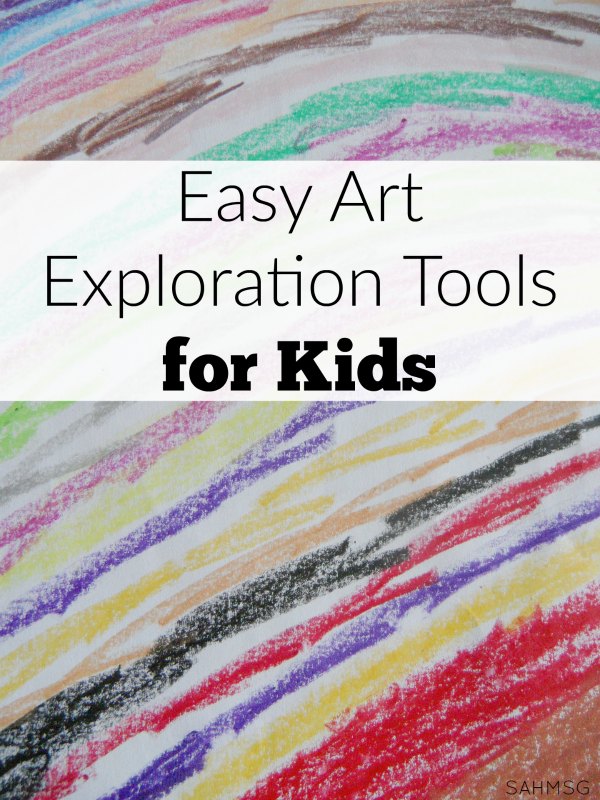Three simple art exploration tools you probably have at home spice up a kids art project. These are easy art exploration tools for kids from toddlers to preschoolers.
Kids love hands-on learning. Art is a great way to give children freedom to create and express themselves. You do not need to buy expensive art exploration tools. Use what you have at home to keep things inexpensive and fun!
1) Plastic sporks
-Use these as paint scrapers: Your child paints on a piece of paper, foil, etc. and then uses the spork to drag across the paper adding texture with lines.
Scrapers are sold at craft supply/teaching supply stores, but you have them free in your next take out bag!
These can even be rinsed and reused like paint brushes, or you just throw them away.
2) Empty ribbon rolls
-Use the ribbon rolls as stamps for painting: Hold onto one side, dip the bottom in paint, and stamp away.
Different sizes would be fun. You can even use toilet paper rolls, paper towel tubes, or straws to do this as well. (Just dip the end in paint, and stamp.) It can be a circle collage!
Trimming the outside of the rim of the ribbon roll can also vary the diameter so that you can have differently sized stamps.
3) Collage time!
-Extra buttons in the sewing box? Tiny lengths of ribbon left over? Use them for a collage together or apart.
I love storing similar colored items together like red ribbon scraps, red scraps of paper, and red yarn pieces, so that I have an easy go-to color collage grab bag. It’s a fun way for kids to
explore learning colors.
4) Q-tips
I buy Q-tips in bulk at Costco, so we always have a lot. They make great disposable paint brushes that teach young children that all-important pincer grasp for writing.

The best part is there is less mess to clean up, and you can have one Qtip per paint color, so color mixing is limited if that is important to you. They are great, cheap tools for creating art. We even used them for some
letter learning.Art is about exploration. There are no rules to creating a masterpiece!
These ideas will work on the fine motor control, eye-hand coordination, and creativity of toddlers and preschoolers.
After your child has completed their work, ask them to tell you about the piece and write down what they say. Attach the print explanation to their art when it is dry and you include language and print awareness as well. Learning is so dynamic!
Have infants? Try these painting tips for babies.

What is your favorite easy art exploration tool for kids?

















Trackbacks/Pingbacks